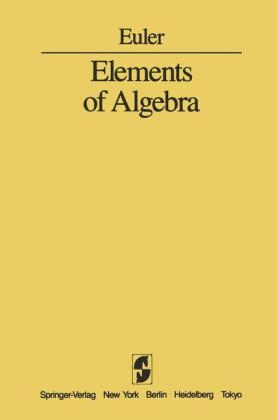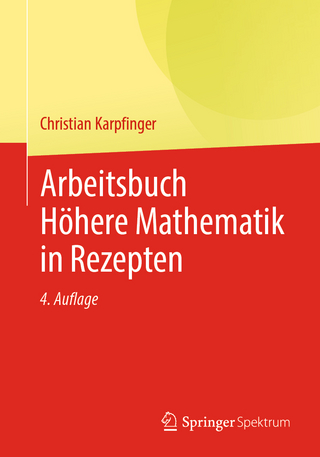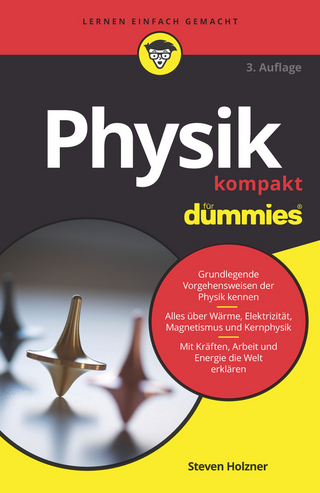
Elements of Algebra
Springer-Verlag New York Inc.
978-0-387-96014-2 (ISBN)
- Titel ist leider vergriffen;
keine Neuauflage - Artikel merken
I. Containing the Analysis of Determinate Quantities.- Section I. Of the Different Methods of calculating Simple Quantities.- Chap. I. Of Mathematics in general.- II. Explanation of the signs + plus and - minus.- III. Of the Multiplication of Simple Quantities.- IV. Of the Nature of whole Numbers, or Integers, with respect to their Factors.- V. Of the Division of Simple Quantities.- VI. Of the Properties of Integers, with respect to their Divisors.- VII. Of Fractions in general.- VIII. Of the Properties of Fractions.- IX. Of the Addition and Subtraction of Fractions.- X. Of the Multiplication and Division of Fractions.- XI. Of Square Numbers.- XII. Of Square Roots, and of Irrational Numbers resulting from them.- XIII. Of Impossible, or Imaginary Quantities, which arise from the same source.- XIV. Of Cubic Numbers.- XV. Of Cube Roots, and of Irrational Numbers resulting from them.- XVI. Of Powers in general.- XVII. Of the Calculation of Powers.- XVIII. Of Roots, with relation to Powers in general.- XIX. Of the Method of representing Irrational Numbers by Fractional Exponents.- XX. Of the different Methods of Calculation, and of their Mutual Connexion.- XXI. Of Logarithms in general.- XXII. Of the Logarithmic Tables now in use.- XXIII. Of the Method of expressing Logarithms.- Section II. Of the different Methods of calculating Compound Quantities.- Chap. 1. Of the Addition of Compound Quantities.- II. Of the Subtraction of Compound Quantities.- III. Of the Multiplication of Compound Quantities.- IV. Of the Division of Compound Quantities.- V. Of the Resolution of Fractions into Infinite Series.- VI. Of the Squares of Compound Quantities.- Chap. VII. Of the Extraction of Roots applied to Compound Quantities.- VIII. Of the Calculation of Irrational Quantities.- IX. Of Cubes, and of the Extraction of Cube Roots.- X. Of the higher Powers of Compound Quantities.- XI. Of the Transposition of the Letters, on which the demonstration of the preceding Rule is founded.- XII. Of the Expression of Irrational Powers by Infinite Series.- XIII. Of the Resolution of Negative Powers.- Section III. Of Ratios and Proportions.- Chap. I. Of Arithmetical Ratio, or of the Difference between two Numbers.- II. Of Arithmetical Proportion.- III. Of Arithmetical Progressions.- IV. Of the Summation of Arithmetical Progressions.- V. Of Figurate, or Polygonal Numbers.- VI. Of Geometrical Ratio.- VII. Of the greatest Common Divisor of two given Numbers.- VIII. Of Geometrical Proportions.- IX. Observations on the Rules of Proportion and their Utility.- X. Of Compound Relations.- XI. Of Geometrical Progressions.- XII. Of Infinite Decimal Fractions.- XIII. Of the Calculation of Interest.- Section IV. Of Algebraic Equations, and of the Resolution of those Equations.- Chap. I Of the Solution of Problems in General.- II. Of the Resolution of Simple Equations, or Equations of the First Degree.- III. Of the Solution of Questions relating to the preceding Chapter.- IV. Of the Resolution of two or more Equations of the First Degree.- V. Of the Resolution of Pure Quadratic Equations.- VI. Of the Resolution of Mixed Equations of the Second Degree.- VII. Of the Extraction of the Roots of Polygonal Numbers.- VIII. Of the Extraction of Square Roots of Binomials.- Chap. IX. Of the Nature of Equations of the Second Degree.- X. Of Pure Equations of the Third Degree.- XI. Of the Resolution of Complete Equations of the Third Degree.- XII. Of the Rule of Cardan, or of Scipio Ferreo.- XIII. Of the Resolution of Equations of the Fourth Degree.- XIV. Of the Rule of Bombelli for reducing the Resolution of Equations of the Fourth Degree to that of Equations of the Third Degree.- XV. Of a new Method of resolving Equations of the Fourth Degree.- XVI. Of the Resolution of Equations by Approximation.- II. Containing the Analysis of Indeterminate Quantities.- Chap. I. Of the Resolution of Equations of the first Degree, which contain more than one unknown Quantity.- II. Of the Rule which is called Regula Caeci, for determining by means of two Equations, three or more Unknown Quantities.- III. Of Compound Indeterminate Equations, in which one of the unknown Quantities does not exceed the first Degree.- IV. Of the Method of rendering Surd Quantities of the form, ?(a + bx + cx2), Rational.- V. Of the Cases in which the Formula, a + bx + cx2, can never become a Square.- VI. Of the Cases in Integer Numbers, in which the Formula ax2 + b becomes a Square.- VII. Of a particular Method, by which the Formula, an2 + 1, becomes a Square in Integers.- VIII. Of the Method of rendering the Irrational Formula,?(a + bx + cx2 + dx3), Rational.- IX. Of the Method of rendering rational the Incommensurable Formula, ?(a + bx + cx2 + dx3 + ex4).- X. Of the Method of rendering rational the irrational Formula, $$ /sqrt[3]{{/left( {a + bx + c{x^{2}} + d{x^{3}}} /right)}} $$.- XI. Of the Resolution of the Formula, ax2 + bxy + cy2, into its Factors.- XII. Of the Transformation of the Formula, ax2 + cy2, into Squares, and higher Powers.- XIII. Of some Expressions of the Form, ax4 + by4, which are not reducible to Squares.- XIV. Solution of some Questions that belong to this Part of Algebra.- Chap. XV. Solutions of some Questions in which Cubes are required.- Additions.- Chap. I. Of Continued Fractions.- II. Solution of some Curious and New Arithmetical Problems.- III. Of the Resolution in Integer Numbers of Equations of the first Degree containing two unknown Quantities.- IV. General Method for resolving in Integer Equations of two unknown Quantities, one of which does not exceed the first Degree.- V. A direct and general Method for finding the values of z, that will render Quantities of the form, ?(a + bx + cx2), rational, and for resolving, in rational Numbers, the indeterminate Equations of the second Degree, which have two unknown Quantities, when they admit of Solutions of this kind.- Resolution of the Equation, Ap2 + Bq2 = z2, in Integer Numbers.- VI. Of Double and Triple Equalities.- VII. A direct and general Method for finding all the values of y expressed in Liteger Numbers, by which we may render Quantities of the form, ?(Ay2 + B), rational; A and B being given Integer Numbers; and also for finding all the possible Solutions, in Integer Numbers, of Indeterminate Quadratic Equations of two unknown Quantities.- Resolution of the Equation, cy2 ? 2nyz + Bz2=1, in Integer Numbers.- First Method.- Second Method.- Of the Manner of finding all the possible Solutions of the Equation, cy2 ? 2nyz + Bz2=1, when we know only one of them.- Of the Manner of finding all the possible Solutions, in whole numbers, of Indeterminate Quadratic Equations of two unknown Quantities.- VIII. Remarks on Equations of the Form, p2=Aq2 + 1, and on the common Method of resolving them in whole Numbers.- IX. Of the Manner of finding Algebraic Functions of all Degrees, which, when multiplied together, may always produce similar Functions.
| Einführung | C. Truesdell |
|---|---|
| Übersetzer | John Hewlett |
| Zusatzinfo | biography |
| Verlagsort | New York, NY |
| Sprache | englisch |
| Gewicht | 1265 g |
| Themenwelt | Mathematik / Informatik ► Mathematik ► Algebra |
| ISBN-10 | 0-387-96014-7 / 0387960147 |
| ISBN-13 | 978-0-387-96014-2 / 9780387960142 |
| Zustand | Neuware |
| Informationen gemäß Produktsicherheitsverordnung (GPSR) | |
| Haben Sie eine Frage zum Produkt? |
aus dem Bereich


